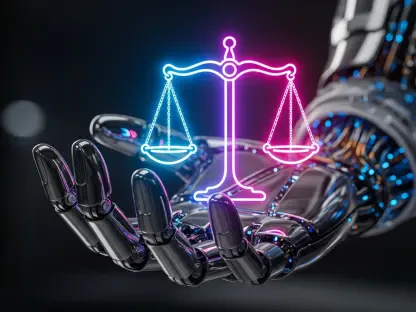Welcome to an insightful conversation on the transformative power of artificial intelligence in financial compliance. Today, we’re speaking with Desiree Sainthrope, a legal expert with extensive experience in drafting and analyzing trade agreements. With her deep knowledge of global compliance and a keen interest in the implications of emerging technologies like AI, Desiree offers a unique perspective on how real-time monitoring and preventive measures are reshaping the fight against financial crime. In this interview, we’ll explore the limitations of traditional compliance methods, the advantages of AI-driven real-time monitoring, the ethical challenges of implementing such technologies, and the critical balance between automation and human oversight.
How have traditional compliance methods struggled to keep pace with the speed and sophistication of modern financial crime?
Traditional compliance methods, often reliant on manual checks and periodic reviews, are increasingly outdated in today’s fast-moving financial landscape. These approaches typically provide only a snapshot of risk at specific moments, like during onboarding or annual audits. Between those checkpoints, fraudsters have ample opportunity to exploit gaps. For instance, if a client’s risk profile changes due to a new sanction or adverse media report, it might go unnoticed until the next scheduled review, potentially leading to significant financial or reputational damage. The reactive nature of these methods means companies are often playing catch-up rather than preventing issues in the first place.
What makes AI-powered real-time monitoring a game-changer compared to these older approaches?
AI-powered real-time monitoring fundamentally shifts compliance from a reactive to a proactive stance. Unlike periodic checks, AI systems continuously analyze data, identifying anomalies and suspicious patterns as they emerge. This constant vigilance drastically reduces the window for fraudsters to act. For example, AI can detect unusual transaction behaviors or sudden changes in a client’s status—such as being added to a sanctions list—and alert companies immediately. This capability allows firms to address risks in the moment, rather than discovering them after the damage is done, making it a critical tool in preventing financial crime.
Can you walk us through how AI tools enhance identity verification to stop fraud before it even starts?
Absolutely. AI tools, especially in identity verification, are incredibly powerful in preventing fraud at the entry point. These systems go beyond simple document checks by using advanced algorithms to spot discrepancies that a human might miss, like altered images or mismatched security features on IDs. They can also combat synthetic identities—fake personas created by combining real and fabricated data—by cross-referencing electronic data with facial recognition and document authenticity checks. This multi-layered approach ensures that fraudulent accounts aren’t even opened, stopping crime before it can take root.
Why is continuous watch list monitoring so vital in today’s regulatory environment?
Continuous watch list monitoring is essential because the regulatory landscape and individual risk profiles are constantly changing. If someone is added to a sanctions list or flagged in adverse media after their initial onboarding, waiting for a scheduled review to catch that change could expose a company to significant risk. AI-driven systems provide immediate alerts on such updates, allowing firms to take swift action, whether that’s freezing transactions or reevaluating relationships. This real-time response is a stark contrast to older methods and is crucial for staying compliant and protecting against illicit activity.
What are some of the biggest technical hurdles in achieving truly real-time AI compliance systems?
Implementing real-time AI compliance systems comes with substantial technical challenges. First, the quality and diversity of training data are paramount—AI models are only as good as the data they learn from. If the data is outdated or biased, the outcomes will be flawed. Additionally, processing massive volumes of data with minimal delay requires robust infrastructure and low-latency systems. Without the right technology, delays can undermine the entire purpose of real-time monitoring. Finally, these systems must be continuously updated to adapt to evolving fraud tactics, which demands agile development and constant vigilance.
How can companies address ethical concerns like bias when deploying AI for compliance?
Ethical concerns, particularly around bias, are a critical issue with AI in compliance. If historical data used to train models contains biases, those can be amplified, leading to unfair or discriminatory outcomes. Companies must actively monitor and audit their AI systems, ensuring diverse and representative data sets are used. Transparency in how decisions are made also helps build trust and accountability. It’s about striking a balance—leveraging AI’s efficiency while implementing safeguards to ensure fairness and protect individuals from unjust treatment.
Why is it so important for AI compliance tools to be transparent and explainable to regulators and stakeholders?
Transparency in AI compliance tools is non-negotiable, especially in a heavily regulated field like finance. Regulators and compliance officers need to understand why a particular decision was made—whether it’s flagging a transaction or denying an account. If AI operates as a “black box” with unclear decision-making processes, it risks failing audits and losing credibility. Explainable AI ensures that decisions can be justified and traced back to specific data points, which not only meets regulatory demands but also builds confidence in the technology’s reliability.
How does blending human oversight with AI lead to better compliance outcomes?
Combining human oversight with AI creates a powerful hybrid approach that maximizes strengths from both sides. AI excels at processing vast amounts of data and spotting patterns at speed, but it’s not infallible—it can miss nuanced context or produce false positives. Human judgment is essential for handling complex or edge cases where empathy, experience, and critical thinking come into play. This collaboration ensures that automated systems are checked and validated, providing a final layer of security while maintaining efficiency. It’s about using AI as a tool to enhance, not replace, human expertise.
What is your forecast for the future of AI in financial compliance over the next decade?
I believe the next decade will see AI becoming even more integral to financial compliance, moving us closer to a truly preventive framework. We’ll likely see advancements in real-time analytics and predictive modeling, allowing firms to anticipate risks before they materialize. However, this will come with heightened scrutiny on ethical practices and transparency, as regulators push for stricter standards. The key will be fostering collaboration between technology providers, financial institutions, and regulators to balance innovation with accountability. If done right, AI has the potential to redefine compliance as a proactive shield rather than a reactive burden.









